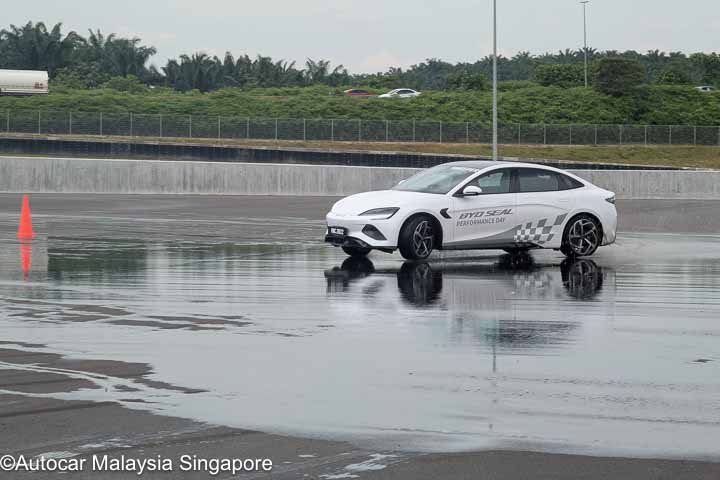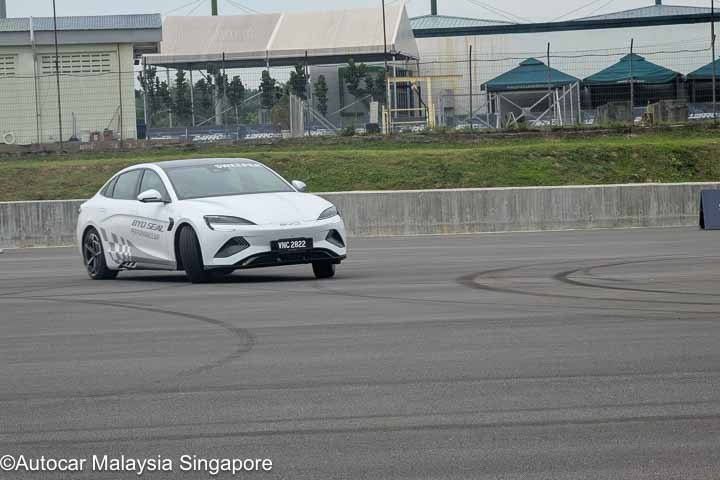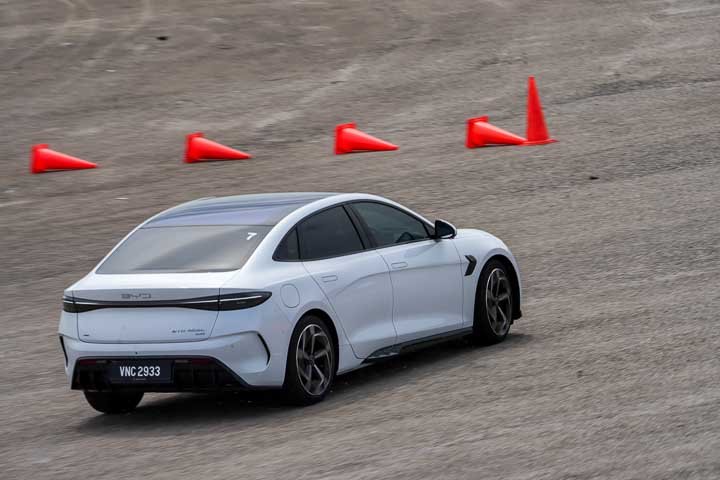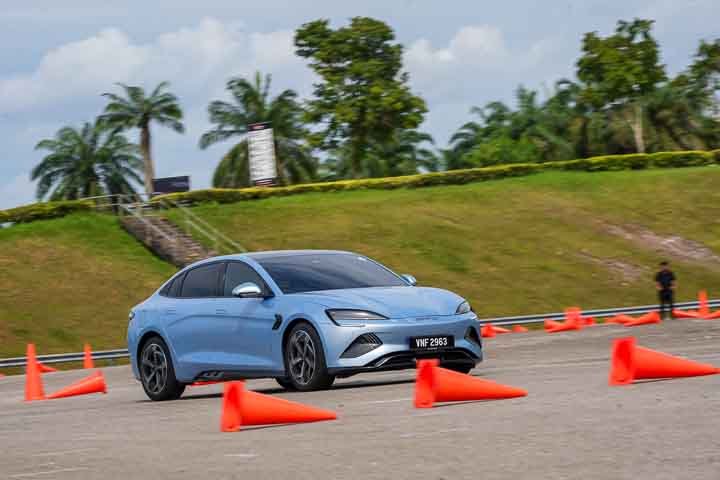
The BYD Seal Performance has the acceleration of a supercar but how does it handle? Matthew Kam had an unexpected experience when he took the all-wheel drive electric car for some gymkhana-style rough handling
Early last year, BYD introduced the Seal to Malaysia. Since then the Seal has won a variety of different awards. The Seal Premium (Extended Range) was the overall winner of the Malaysia Car of the Year 2024 award. It also won the category for sedans under RM200K. The Seal Performance has also won its respective category, Sedans over RM200K.
It would appear that the Seal is on track to becoming a staple on Malaysian roads. However, how is the top-spec, all-wheel drive Seal Performance under tougher conditions? First we watched the Seal Performance in a drift demonstration then we put the BYD Seal Performance through a series of handling exercises.
Drift Demonstration
Presumably the objective of the drift demonstration was to show off the Seal’s prowess in handling and to display their new “Intelligence Torque Adaptation Control” (iTAC) Technology. On YouTube, the BYD video demonstrating their iTAC technology shows the Seal performing a continuous drift to form a large circle. While I was expecting to see this performance replicated in the flesh, this was not the case.
Whilst the screaming of the tyres and the smell of burnt rubber would contend otherwise, what we got to witness was far from the effortless, controlled power-sliding one would associate with the term “drifting”. To the Seal’s merit, it could enter into the slide on the mildly moistened bitumen. The issue lay with maintaining this side-ways motion. The Seal could manage to slide for a while, but it would eventually re-straighten itself. Perhaps I set my expectations too high. BYD’s video demonstration was done in winter conditions with snow, a far cry from the stinking hot day on which this demonstration took place.
In a way, the Seal Performance did enough but it couldn’t escape the bounds of physics. The fact of the matter is that the Seal is not a light car, weighing over two tonnes. While “Performance” is part of its name, it is not designed specifically to drift. In light of this, the demonstration could be considered a success given that some side-ways shenanigans did occur that day. As a comfortable vehicle with four doors, the performance displayed was commendable.
How is it on the track?
To put the Seal Performance’s handling to the test, we had a gymkhana course set up. The course entailed weaving between cones, a few hairpin turns, and a singular long straight quickly followed by another set of directional changes. This course really put the Seal to the test.
To begin, the most shocking part of the Seal was the acceleration. I had never previously driven an electric car, the way in which the Seal took off from a stand still was unlike anything I had ever experienced. Then again, the Seal Performance does 100km/h in under four seconds and boasts over 500 horsepower. On the straight too, the Seal Performance put its monstrous horsepower to use. When faced with some cones to weave through the Seal managed to stay stable and the handling was fairly good. This is in part due to a relatively low centre of gravity, virtue of the heavy batteries. As such, the body roll was manageable and better than expected. With the hairpin turns, the Seal again performed well however it was evident that the iTac technology was working overtime to achieve this. This was more evident when watching more experienced drivers in the same scenario as they were more gung-ho with throwing the Seal around the bends. Again, the Seal is not a light vehicle and the iTac technology controlling the torque at each wheel seemed almost necessary to produce the results that it did. The brakes were good and they worked very well, evidenced by my survival of the course. Overall, the Seal Performance is more than up to the challenge.
Images by Matthew Kam






Additional images courtesy of BYD



